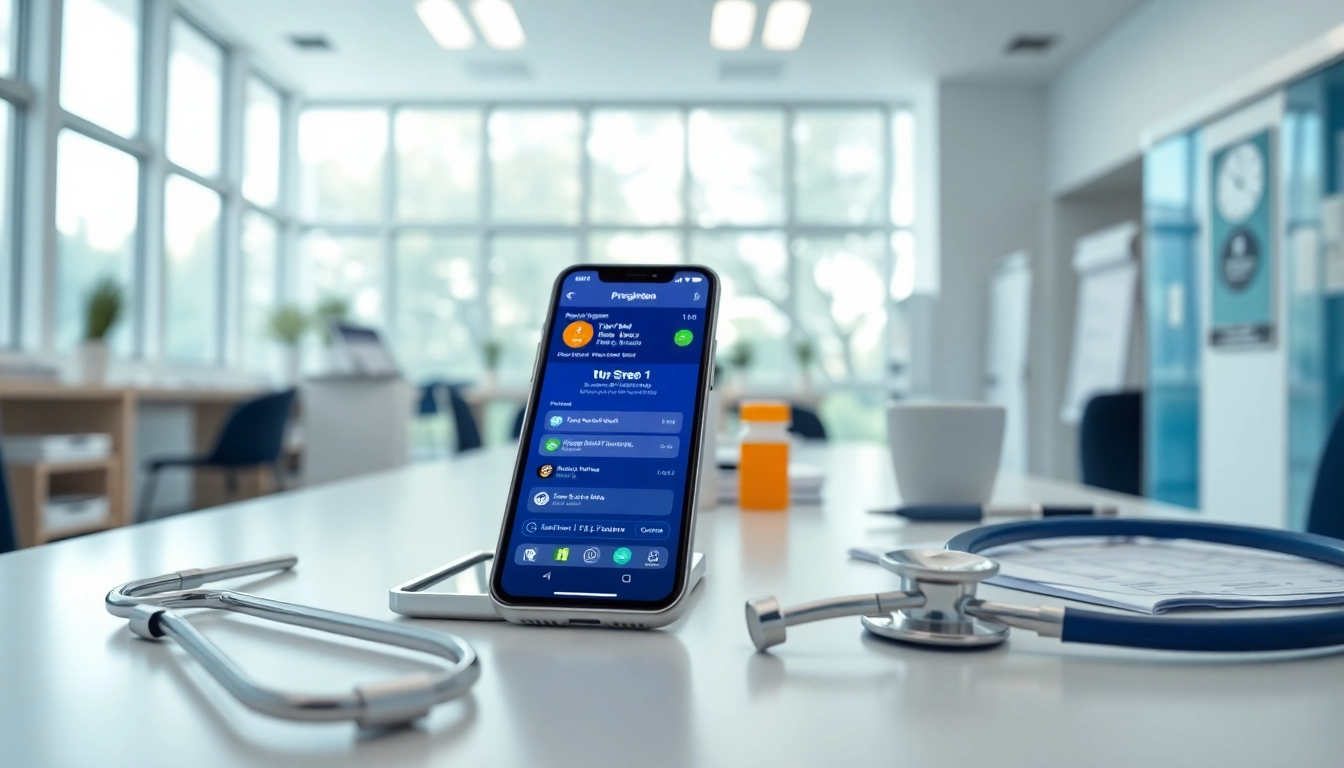The Importance of E-Prescribing Software
In today’s rapidly evolving healthcare landscape, the adoption of technology to enhance patient care has become crucial. Central to this evolution is e-prescribing software, which provides a sophisticated means for healthcare professionals to streamline the prescribing process. By leveraging electronic methods, practitioners can not only optimize their workflow but also enhance patient safety and treatment outcomes. Understanding the significance of this software is the first step for healthcare providers considering modernization. For insights into the benefits and functionalities, many healthcare professionals turn to various eprescribing software reviews to inform their choices.
Understanding E-Prescribing Fundamentals
E-prescribing, often referred to as electronic prescribing, is the electronic generation, transmission, and filling of medical prescriptions. It replaces the traditional paper-based method with a streamlined system that aligns with modern healthcare practices. Such systems typically involve a software application that enables prescribers to print or electronically send prescriptions to a pharmacy of the patient’s choice.
Additionally, e-prescribing software integrates with electronic health records (EHR) systems, providing practitioners with real-time access to patient medication histories, allergies, and potential drug interactions. This holistic view is essential for making informed prescribing decisions, ultimately leading to better patient outcomes.
Benefits of E-Prescribing over Traditional Methods
The transition from paper-based to electronic prescribing offers numerous advantages:
- Increased Efficiency: E-prescribing eliminates the need for handwritten prescriptions, reducing errors and speeding up the process of ordering medications.
- Improved Patient Safety: With integrated clinical decision support, these systems can flag potential allergies and contraindications before a prescription is completed.
- Cost Savings: E-prescribing can help lower overall healthcare costs by streamlining operations and reducing the need for follow-up calls regarding prescriptions.
- Enhanced Communication: Patients receive accurate prescriptions that can be easily transmitted to their pharmacy, enhancing the overall experience and reducing wait times.
Common Challenges Faced by Practitioners
While the shift to e-prescribing presents numerous benefits, practitioners may face challenges, including:
- Implementation Costs: Initial investments for software and training can be significant, posing a barrier for smaller practices.
- Learning Curve: Staff may require time to adapt to new systems, leading to temporary disruptions in workflow.
- Integration Issues: Incompatibility with existing EHR systems can hinder data sharing between systems.
By anticipating these challenges and planning accordingly, practices can smooth the transition to e-prescribing software.
Key Features to Look for in E-Prescribing Software
When evaluating e-prescribing software, it’s important to identify key features that can significantly affect a practice’s efficiency and effectiveness. Here are some vital aspects to consider:
User Interface and Experience Insights
A user-friendly interface is paramount in ensuring smooth daily operations. Software that is intuitive allows healthcare providers to navigate easily, reducing errors associated with navigation and increasing the overall efficacy of the system. For instance, features such as quick access to frequently prescribed medications, customizable templates, and clear instructions can significantly enhance the user experience.
Integration Capabilities with Existing Systems
Seamless integration with existing EHR and practice management systems is crucial. Systems that can synchronize data, such as patient records and insurance details, minimize manual entry, which can be time-consuming and error-prone. Consideration of how well the e-prescribing software works with other essential systems can impact workflow efficiency and data accuracy.
Compliance and Security Considerations
The importance of compliance with healthcare regulations, such as HIPAA, cannot be overstated. E-prescribing software must ensure that patient data is protected with strong encryption and secure access controls. Additionally, the software should be updated regularly to comply with changing laws and regulations surrounding electronic prescriptions.
Evaluating E-Prescribing Software Reviews
As practices seek to enhance their prescribing methods, analyzing eprescribing software reviews becomes indispensable in choosing the right solution. Reviews can provide critical insights regarding user experiences and the effectiveness of various software options.
Understanding Rating Systems and User Feedback
Most e-prescribing software platforms have accompanying user reviews and ratings that can inform potential buyers. Understanding the rating systems used by review platforms and what constitutes a high or low rating can aid in identifying promising software solutions. In addition, analyzing written feedback can unveil common themes about functionality, support quality, and user satisfaction.
Identifying Red Flags in Reviews
While reviews can offer valuable insights, they can also present potential red flags. Frequent mentions of technical issues, inadequate customer support, or a steep learning curve may indicate that a software product could pose challenges for users. Being vigilant about such red flags ensures more informed decision-making.
Utilizing Reviews for Informed Decision-Making
Practices should solicit feedback from various sources rather than relying solely on one review platform. Combining information from users across different platforms can paint a clearer picture of a solution’s effectiveness. Additionally, engaged discussions with peers can yield practical insights that are not always captured in written reviews.
Comparing Top-Rated E-Prescribing Solutions
With a variety of e-prescribing tools available, making a choice requires careful consideration of features, costs, and user satisfaction. Below are key elements to compare when evaluating solutions.
Reviewing User Experiences and Satisfaction Levels
Gathering user experiences through ratings, testimonials, and case studies is crucial. Effectively comparing how different systems have performed for peers and larger practices can provide insights into satisfaction levels, common use cases, and overall effectiveness.
Analyzing Cost vs. Value in Software Options
The cost of e-prescribing software can vary significantly based on features, support, and scalability. Evaluating price in the context of the value offered is essential. Consideration should include potential savings from increased efficiency, decreased errors, and the ability to provide better patient care.
Case Studies Highlighting Successful Implementations
Exploring case studies allows potential buyers to see real-world applications of e-prescribing software. Successful implementations can serve as templates for practices to anticipate challenges and optimize their own use of these technologies.
Future Trends in E-Prescribing Software
As healthcare technology continues to advance, it is vital to stay abreast of trends that may shape the future of e-prescribing.
Innovations on the Horizon in Healthcare Technology
Emerging innovations in healthcare technology, such as blockchain for enhanced security and telemedicine integrations, are likely to influence the next generation of e-prescribing software. Practices should be aware of these innovations to stay competitive and improve care delivery.
The Role of AI and Machine Learning
Artificial intelligence (AI) and machine learning have great potential to transform e-prescribing. These technologies can analyze vast amounts of data, providing predictive insights, personalized medicine options, and enhancing decision support for practitioners, enabling them to adopt evidence-based practices.
Anticipating Regulatory Changes and Compliance
The ever-evolving regulations in healthcare require e-prescribing solutions to remain adaptable. Providers should keep abreast of potential regulatory changes to ensure compliance, as failure to do so can lead to severe penalties and jeopardize patient safety.











Leave a Reply